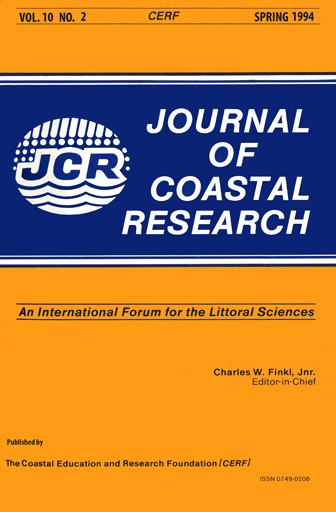Use of an Instrumented Tripod System to Examine Sediment Dynamics and Fine-Scale Strata Formation in Muddy Surfzone and Nearshore Environments
Keywords:
Sediment transport, tidal flats, cohesive sediment, Amazon RiverAbstract
A prototype instrumented tripod system designed for quantifying physical processes in muddy surfzone and nearshore regions was tested on tidal flats north of the Amazon River mouth. Physical data (i.e. wave characteristics, current velocities, suspended-sediment concentrations and seabed characteristics) recorded during a 15-hr deployment at 1- 3.5 m water depth on this energetic, non-barred, fine-grained deposit demonstrate the value of this system to make field observations of sediment dynamics over an underconsolidated cohesive boundary. Significant sediment transport is occurring via resuspension of fine-grained particles and aggregates by wave-induced velocities up to 100 cm sec-1. Tidal currents (0-35 cm sec-1) are shorenormal with a low-frequency (residual) component advecting material alongshore. Physical data are supported by simultaneous coring which allows documentation of reworking for the uppermost seabed over a semi-diurnal tidal cycle. A fluid-mud layer (< 10 cm) thick covers the "seabed" and changes in density and thickness with varying benthic shear stress, Muddy deposits accumulating in this setting are composed of physically stratified laminations of silt/clay (µ - to cm-scale).


